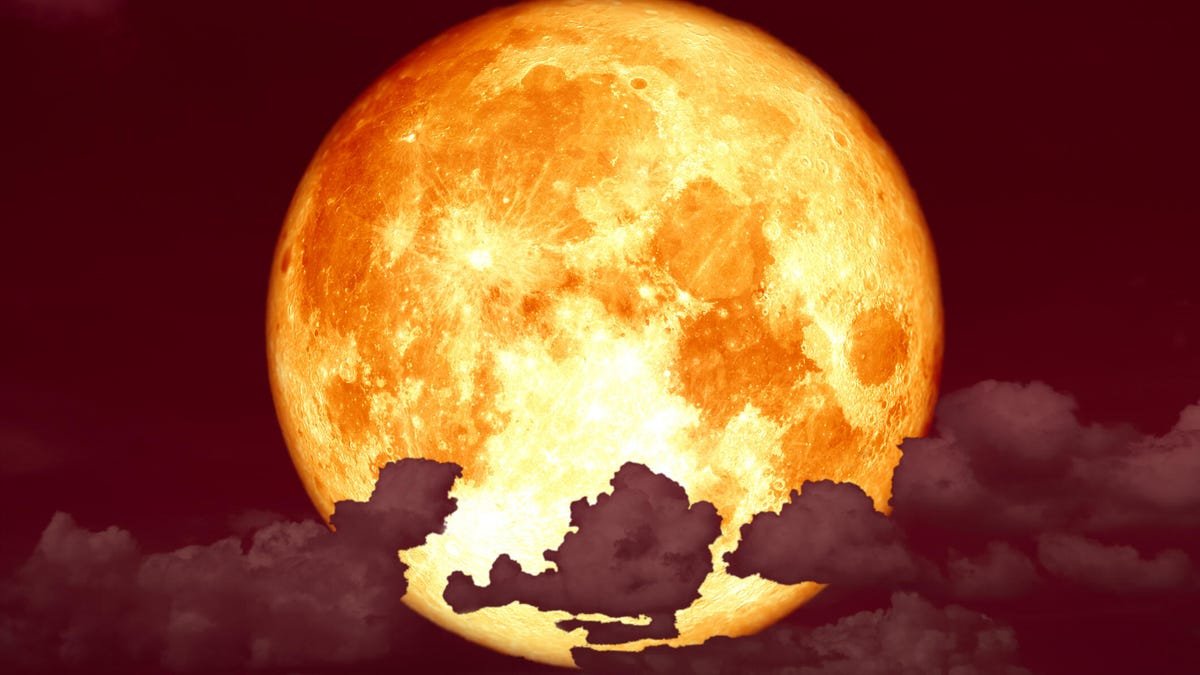Anyone looking up at the night sky this weekend will be able to see the Strawberry Moon. Unlike Solar eclipse or Nova explosionsThe charmingly named Strawberry Moon occurs every year. It is the last full moon of spring or the first full moon of summer, and it always occurs in June.
This year’s Strawberry Moon is a little more special than most. It officially occurs over the weekend of June 21 and 22, although you will be able to see about 97% of its brightness on June 20 and 23. Coincidentally, this means that the full moon occurs at the same time as the full moon. Summer Solstice.
Read more: A thermonuclear space explosion could create a new star in the night sky
This means that two things will happen. First, the moon will be closer than usual, which means it will appear much larger in the sky than it normally does. This is referred to in the Old Farmer’s Almanac as Moon illusion. The illusion stems from the moon’s proximity to the horizon. The human eye naturally compares its size to the size of surrounding objects, such as the tops of houses and trees. This makes it appear much larger than it would if it were in the sky.
Also, the fact that the moon is low on the horizon will make the moon colorful. In short, being close to the horizon exposes the moonlight to denser air, causing it to change colors. Therefore, this year’s Strawberry Moon will be yellow, orange or even red depending on which part of the world it is viewed from. It will be among the lowest, largest and hottest we have seen in years.
Read more: Another planetary show starts on August 23: discover 6 planets in the sky at once
What is the strawberry moon?
Although the name conjures visions of a red or pink moon, the Strawberry Moon is even simpler. the The Old Farmer’s Almanac identifies the Strawberry Moon Just like the full moon that occurs in June. If there are two full moons in June, it indicates the second moon. Officially, it is the last full moon of spring or the first full moon of summer.
The name has Native American roots. Tribes in the northeastern United States, including the Algonquin, Ojibwe, Dakota, and Lakota, refer to the moon as the Strawberry Moon because it appears at about the same time that strawberries are ripe and ready to be picked.
Other names include Flowering Moon, Green Corn Moon, and Hoyer Moon while tribes in the Pacific Northwest refer to it as the Birth Moon, Recumbent Moon, or Hatching Moon, as many baby animals are born around this time each year.
When can I see the Strawberry Moon this year?
The full moon has officially been set for the evening of June 22nd. However, June 21 will have a waxing gibbous at 100% brightness, which will look exactly like a full moon. June 20 will feature a waxing gibbous with a 97% brightness full moon, while June 23 will be a waning gibbous with a 97% brightness full moon.
What all this means is that the moon will either be full or appear full for the next four days. However, June 21 and 22 will offer the best experiences as the moon will be 100% full during these two evenings.
Mark your calendars for other lunar events
The Strawberry Moon will be interesting this year, but there are some other big lunar events happening in the coming months. According to Astropixel, we are set to see not one, but four supermoons in 2024. They will occur on August 19, September 18, October 17, and November 15. A supermoon refers to a moon that is physically closer to Earth than Earth. Average. The supermoon on September 18 is also the Harvest Moon, making it a supermoon.
Save the date of September 18, the Super Harvest Moon, in particular. On the day before the full moon, there will also be one Partial lunar eclipse. This will be the last lunar eclipse until March 2025.

